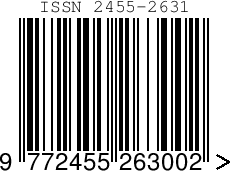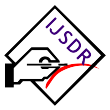Imp Links for Author
Imp Links for Reviewer
Research Area
Subscribe IJSDR
Visitor Counter
Copyright Infringement Claims
Indexing Partner
|
Published Paper Details
|
|
| Paper Title: | ENDOSCOPIC EAR SURGERY |
| Authors Name: | Dr. ARPIT D. PRAJAPATI |
| Unique Id: | IJSDR2212003 |
| Published In: | Volume 7 Issue 12, December-2022 |
| Abstract: | Introduction: Our philosophy is that the curves and niches of the middle ear are best visualised by the endoscope rather than straight line view of the microscope.Microscope is mainly the domain of the mastoid.We are not surgeons of the tool we are surgeons of the ear.Thus we need to combine both for the benefit of the patient Aims and objectives: Is to study 1) Endoscopic anatomy of the middle ear 2) Ventilation pathway of the ear 3) And combine the use of endoscope and microscope even in ear surgeries for the better of the patient Materials and methods: This is a prospective analysis of 50 patients diagnosed with chronic suppurative otitis media with tympanic perforation and/or adhesive drum in our tertiary care referral centre. The period of study is from January 2018 to January 2021. Fifty patients with complete clinical data were identified and included in the study. Results: Fifty patients were taken for the study. The mean age was 30.47 years. Thirty three patients(66%) were males and seventeen (34%)were females. There where 42 cases (84%) of CSOM with tympanic membrane perforation in which type 1 underlay tympanoplasty was done and in 4 cases(8%) of type 2 tympanoplasty was done,2 cases (4%)of exploratory tympanotomy and in 2 cases (4%)atticotomy was done.In 38 patients(76%) tarsal cartilage was used and in rest 12(24%) fascia lata graft was used. In patients with tympanic membrane perforation 35(70%) had blocked ventilation pathway which was cleared.Graft uptake was seen in 46 cases (92%) and there was mean AB gap of 35.8 which was reduced to 16.06 post op. Conclusion: One should routinely use endoscope to see middle ear anatomy even while operating through post aural routes .Ventilation pathway are best visualised and if blockage present are cleared by the endoscope.The future of endoscopic ear surgery lies in approach to the lateral skull base via sub cochlear tunnel with minimal morbidity. Keywords: Endoscopic ear surgery, Endoscopic |
| Keywords: | Endoscopic ear surgery, Endoscopic |
| Cite Article: | "ENDOSCOPIC EAR SURGERY ", International Journal of Science & Engineering Development Research (www.ijsdr.org), ISSN:2455-2631, Vol.7, Issue 12, page no.10 - 15, December-2022, Available :http://www.ijsdr.org/papers/IJSDR2212003.pdf |
| Downloads: | 000337211 |
| Publication Details: | Published Paper ID: IJSDR2212003 Registration ID:202830 Published In: Volume 7 Issue 12, December-2022 DOI (Digital Object Identifier): http://doi.one/10.1729/Journal.32642 Page No: 10 - 15 Publisher: IJSDR | www.ijsdr.org ISSN Number: 2455-2631 |
|
Click Here to Download This Article |
|
| Article Preview | |
|
|
|
Major Indexing from www.ijsdr.org
| Google Scholar | ResearcherID Thomson Reuters | Mendeley : reference manager | Academia.edu |
| arXiv.org : cornell university library | Research Gate | CiteSeerX | DOAJ : Directory of Open Access Journals |
| DRJI | Index Copernicus International | Scribd | DocStoc |
Track Paper
Important Links
Conference Proposal
ISSN
 |
 |
DOI (A digital object identifier)
  Providing A digital object identifier by DOI How to GET DOI and Hard Copy Related |
Open Access License Policy
Social Media
Indexing Partner |
|||
| Copyright © 2024 - All Rights Reserved - IJSDR | |||






Facebook Twitter Instagram LinkedIn